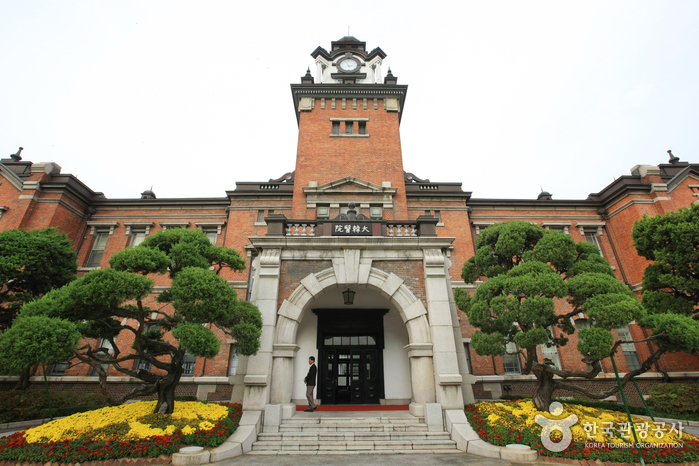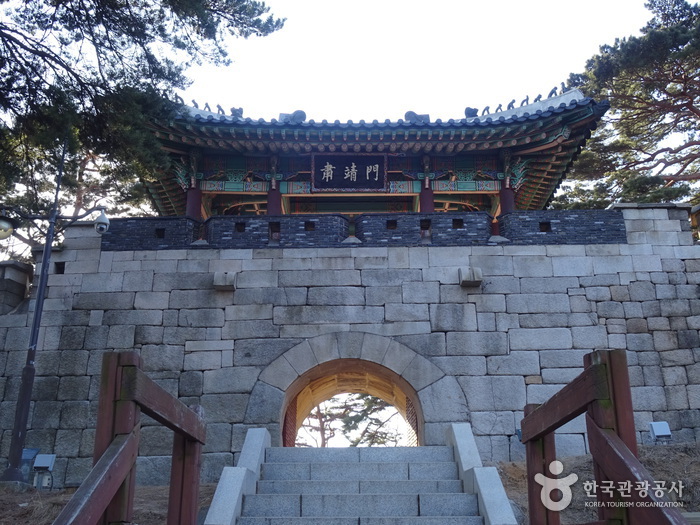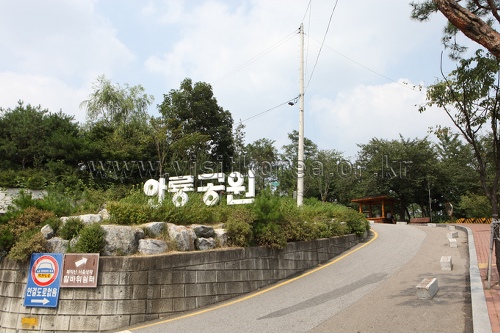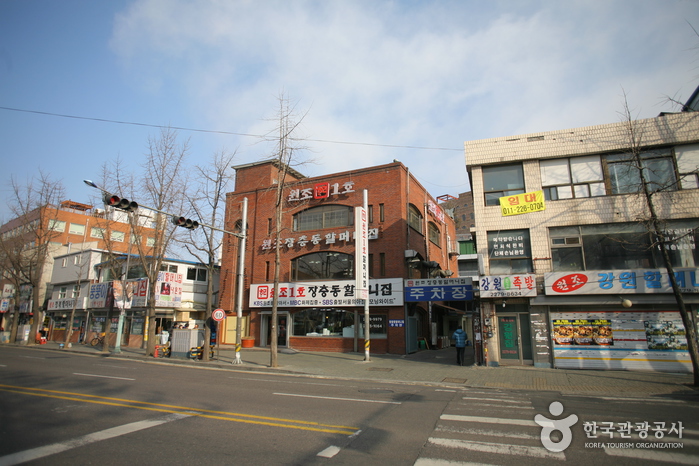Golden Bull (골든불)
6.1Km 2020-05-14
60, Itaewon-ro 42-gil, Yongsan-gu, Seoul
+82-2-794-7073
Golden Bull, located in a renovated company basement, is the second brand of 2017 Michelin Guide inductee “Koroviar”, aiming to bring same quality with same ingredients at a lower cost. Visitors can enjoy premier steak and other dishes at a lower cost, and with a large hall fitting at most 50 people. Visitors can plan your next company dinner, wine meetings, birthdays or other events without any additional rental fees.
The restaurant serves hanwoo (Korean beef) grade 1+, the highest quality, at a cost of a regular restaurant, and with a fairly priced side dishes and drinks. The restaurant also offers Western and European style dishes to please the taste of diverse customers. The restaurant has about 10 parking spaces with nearby public parking spaces, and is located about five minutes from Hangangjin Station.
Seoul Daehan Hospital (서울 대한의원)
6.1Km 2021-12-23
101, Daehak-ro, Jongno-gu, Seoul
+82-2-2148-1842
Daehanuiwon (Daehan Medical Center) is an antique two-story brick building within the grounds of Seoul National University Hospital. It was established under the direct administration of the Uijeongbu (State Council), combining the Gwangjewon (under the Home Ministry), Gyeongseong Medical School and the Korean Red Cross Hospital (under the Royal Household).
Built in the Madubong Hill area, this location where Hamchunwon, the outer garden of Changgyeonggung Palace, once stood in 1484 (15th year of King Seongjong), was also once the site of Gyeongmogung Palace, where King Jeongjo enshrined the mortuary tablet of his birth father Crown Prince Sado Seja in 1776 (the year King Jeongjo ascended to the throne).
These places that held importance for the royal family were destroyed as the Japanese built Gyeongseong Empire University in its place. In 1907, with the announcement of the plan to establish Daehan Medical Center, construction began on the main building, seven wards and affiliated buildings. Construction was completed in November 1908.
The Daehan Medical Center opened in Gwangjewon, but upon Japanese colonization in 1910, its name was changed to the Japanese Viceroyalty Hospital. In 1926, it was included as a part of Gyeongseongjeguk University to become a university hospital. Since the liberation of Korea in 1945, it has been a hospital affiliated with Seoul National University.
Bonafide Jewelry [Tax Refund Shop] (보나파이드주얼리)
6.1Km 2024-06-27
29, Itaewon-ro 54ga-gil, Yongsan-gu, Seoul
-
Man in Black - Itaewon Branch [Tax Refund Shop] (맨인블랙 이태원)
6.1Km 2024-04-18
1F, 4, Itaewon-ro 54ga-gil, Yongsan-gu, Seoul
-
Sukjeongmun Gate (북악산 숙정문)
6.1Km 2020-06-19
1, Daesagwan-ro, Seongbuk-gu, Seoul
+82-2-747-2152
Of the Four Great Gates (Sukjeongmun, Namdaemun, Dongdaemun, and Seodaemun), established by King Taejo in 1396, Sukjeongmun is called the north gate.
Located to the north of Seoul, this gate, with Gyeongbokgung Palace in the center and Changaemun (Jahamun) to the right, make up the wings of the north gate. Due to the possible danger of the area being damaged from all the pedestrians, the king in 1413 planted pine trees and prohibited passing this area. Henceforth, Sukjeongmun became a scenic walkway until the North Korean Communist infiltration of 1968, which prohibited the passing of all civilians.
The reopening of Sukjeongmun in April of 2006 has led to the opening of Bugaksan Mountain in April of 2007 and is in the process of dividing it into 3 courses. Bugaksan Mountain has been kept well-preserved due to a long period of restriction in this area, and if you climb the mountain, you will be able to see all of Seoul.
Waryong Park (와룡공원)
6.1Km 2020-07-08
192, Waryonggongwon-gil, Jongno-gu, Seoul
+82-2-2148-2845
Situated in Myeongryun-dong in Seoul and established in 1984, Waryong Park is located near Malbawi, one of the best overlooks from which to see the city of Seoul. The park is close to natural attractions such as Samcheong Park, Changgyeong Park, and Bugaksan Mountain.
Although it was difficult to grow trees in the park because of the shallowness of the soil, many citizens participated in the nationwide campaign to plant over 10 million trees across the country, transforming places like Waryong into lush areas filled with flowering plants.
In the park, spring blooms forth in a colorful assortment of cherry trees, plum blossoms, azaleas, and forsythias, making it a popular destination for family visitors. There are also a variety of excellent amenities: badminton courts, aerobic fields, fitness facilities, and pavilions, wonderful for exercise, leisurely walks, or simply taking a break.
A famous hiking trail, running between the Seoul Fortress Wall and Samcheong Park, passes right through the park. Flanked by cherry blossoms, the trail attracts nature lovers throughout the year and especially in spring, when the trees are in full bloom. The trail also passes by the Fortress Wall in Bugaksan Mountain.
Numbering Flagship Store - Hannam Branch [Tax Refund Shop] (넘버링플래그십스토어 한남점)
6.1Km 2024-06-27
11, Daesagwan-ro 5-gil, Yongsan-gu, Seoul
-
Numbering Flagship Store - Hannam Branch [Tax Refund Shop] (넘버링 플래그십스토어 한남점)
6.1Km 2024-06-27
11, Daesagwan-ro 5-gil, Yongsan-gu, Seoul
-
Jangchung-dong Jokbal Street (장충동 족발 골목)
6.1Km 2019-09-26
176, Jangchungdan-ro, Jung-gu, Seoul
+82-2-2236-9135
The phenomenon of Jangchungdong Jokbal Street started 50 years ago with the opening of two Korean jokbal (steamed pig trotters) restaurants, followed by the influx of new jokbal restaurants during the late 70s and early 80s.
Today, the jokbal restaurants continue to serve one of the most sought Korean food from the main road and the alleyways of the Jangchungdong 1(il)-ga Street area.

![Bonafide Jewelry [Tax Refund Shop] (보나파이드주얼리)](http://tong.visitkorea.or.kr/cms/resource/37/3314337_image2_1.jpg)
![Man in Black - Itaewon Branch [Tax Refund Shop] (맨인블랙 이태원)](http://tong.visitkorea.or.kr/cms/resource/65/2888965_image2_1.jpg)


![yyk [Tax Refund Shop] (와이와이케이)](http://tong.visitkorea.or.kr/cms/resource/67/3313167_image2_1.jpg)
![Numbering Flagship Store - Hannam Branch [Tax Refund Shop] (넘버링플래그십스토어 한남점)](http://tong.visitkorea.or.kr/cms/resource/25/3314725_image2_1.jpg)
![Numbering Flagship Store - Hannam Branch [Tax Refund Shop] (넘버링 플래그십스토어 한남점)](http://tong.visitkorea.or.kr/cms/resource/95/3313195_image2_1.png)

 English
English
 한국어
한국어 日本語
日本語 中文(简体)
中文(简体) Deutsch
Deutsch Français
Français Español
Español Русский
Русский